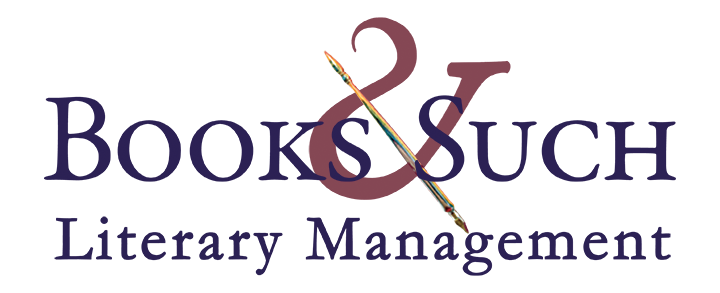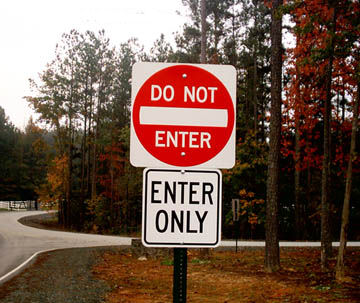Blogger: Mary Keeley
I recently picked up a novel for a light-reading break, but also to research competition for several of my clients. A traditional CBA publisher had published the book a few years ago. Although I’d never read any of the author’s books, the setting was a favorite of mine, so I nestled in for a satisfying evening. Long story short, it took five days to trudge my way through it. I would have given up after the first few chapters except that I wanted to uncover the jewel that had made it publish-worthy. The conclusion I drew is a strong reminder about the importance of a unique angle.
What first struck me was an abundance of unnecessary detail that slowed the pace and left nothing for the reader’s imagination. After the first few chapters, it was apparent how the story would end. Granted this was a light read, but seriously, nary a twist or surprise? And very little tension. The main characters’ personal crises were under-developed. Solutions to problems were too convenient, almost contrived, which further contributed to the predictability.
read, but seriously, nary a twist or surprise? And very little tension. The main characters’ personal crises were under-developed. Solutions to problems were too convenient, almost contrived, which further contributed to the predictability.
But the story had these strengths:
- Likeable characters – The main characters and secondary characters were likeable and honorable. I wanted to see them succeed and reach their goals. However, a villain or at least an opposing character thrown into the mix could have provided added tension and a few twists.
- Treatment of the setting – The characters’ interaction with the setting is the main element that felt realistic in the story. The author had done adequate research. Even so, the ways characters overcame problems arising from the setting were too neat and tidy. A waste of potential crisis moments until the one at the end of the story. It happened abruptly and was tied up in a neat, happily-ever-after bow way too quickly.
…and the strength that made the book marketable
- A unique angle – A main character’s struggle involved a current publicized illness among a certain group of people who were important to a broad audience. As I mentioned earlier, this book was published some years ago. Not many, if any, stories involving this theme had been written at the time. Although the character’s struggle was under-developed, the author did reveal pertinent information and gave readers a small window into how the condition affects those who deal with it.
I had to keep reminding myself that this book was traditionally published as I determined to read to the end. You may have had similar experiences reading a novel or nonfiction book. On this blog we stress the importance of improving your craft until your book represents your very best writing. This will always be top priority. But as in my example, finding a fresh angle, one that is unique, can sometimes eclipse #1 because of its perceived marketability by a publisher. We agents are occasionally surprised by editors’ choices, but that’s the nature of this crazy, exciting industry.
So, never give up.
Search until you find an angle that is timely, as in newsworthy or of known concern to your audience. That means you have to have your finger on the pulse of your readers, but this is a topic for another post. To my surprise the book in question received many good reviews on Amazon. It showed me two things: (1) the author gave the target readers what they wanted, a pleasant stress-free read, and (2) the story’s unique angle was strong enough to overcome the drawbacks.
Editors see multitudes of proposals. Books with a unique approach get their attention. We agents know this and look for prospective clients who can deliver it.
At what point in writing your first draft did you think about a unique approach? Without revealing your unique angle (or it won’t be unique any longer), how did you arrive at it? How well do you know the interests and concerns of your target readers?
TWEETABLES:
Your book’s fresh approach gets editor and agent attention. That’s the power of a unique angle. Click to Tweet.
A unique angle may overcome weaknesses in other areas to make a book marketable. Click to Tweet.

 Dealing with Contradictory Feedback
Dealing with Contradictory Feedback
Way too ill as I am writing this to be clever so I will stick with this formula –
* Boy meet girl
* Boy loses girl
* Boy and girl go through dreadful experiences while apart which convince them that they must slay dragons and endure audits to be together again
* Final embrace and happily-ever-after under a soothing sunset (or by the lights of artillery flares).
* Of course, my ‘girls’ and ‘boys’ are generally in mid-to-late middle age, alone and afraid they will always be so. The ‘love found and then seemingly lost’ storyline is of pretty urgent concern to a lot of readers.
* As it was to me, once upon a time, but Barbara was gracious enough to remarry me. In a helicopter. In Vegas. Over the Strip, at night.
* No Elvis-as-priest or witness, but I did wear a pair of blue suede shoes.
* My edge? I really, really care about nurturing hope.
Love this, Andrew. I think it’s great that your characters are mid-to-late middle age.
*And blue suede shoes? Wow, that’s confidence. 🙂
Ah, Mary, I chuckled as I read this. Sometimes I have to internally yell at myself, “Turn off the the everlasting editor in your head already, and just enjoy the story!”
*My angle? To paint Scripture in a way folks haven’t noticed before and **BOOM** apply it to life. With a touch of humor. Easy-reader style. The way Jesus did it with his parables.
Shirlee, I have that same editor in my head. Drives. Me. Crazy. I like your angle. May we all present Jesus in our writings in a way that makes readers want to know Him more.
Great story, Mary. I love that you read the story to find the jewels in it that made it one an editor picked up and published.
*When I planned out my current WIP, I brainstormed with a few people to try and find ways to make the story unique. I am hoping I hit the mark. 🙂 I’ve been working to become more familiar with the interests and concerns of my fellow readers, but I want to be more intentional about that.
A unique approach – it popped out while the story was being written. I don’t know if I intentionally sat down and said, “Okay, this is my first novel, it should be penned in a unique voice and resonate with readers.”
Much like Pete, I just stepped out and wrote.
I can only hope who I am is obvious in the novel and God will be pleased to transform readers with it.
Is any angle really unique? My English teacher said Shakespeare had already dramatized most of them.
*In my plots, someone must make a choice that could get them killed to have any hope of marrying the one they love.
*The angle isn’t unique (I’m sure Shakespeare used it) but the execution is.
On my first baseball novel, I believe I had (what I consider to be) all the unique angles planned when the story was still gestating in my gray cells. Same would be true for the sequel, as well as for my novel based in China. For my first novel, a New Testament era story, I was about a third of the way through when I realized I didn’t really have much in the way of a unique angle, other than the twist at the end I was building toward. I added an angle here and there—or maybe I should say I added conflict. I’m not sure the angles producing that conflict were all that unique. For my novel-in-progress (a sequel to my first, having gestated for five years), my unique angles came about during the gestation.
.
How did I arrive at these unique angles? I don’t know; I just did.
.
How well do I know the interests and concerns of my target readers? I suppose if I really knew this I’d have many more than 35 book sales for the year.
In my very first draft, I sorta didn’t think of the unique angle as such, but its certainly taken on a life of its own, *and* cranked up the swoon factor a heap. Which always helps engage readers.
And yes, I’ve already got my dress picked out for the Oscars and my speech written for Best Original Screenplay…even though I don’t write screenplays…and I promise to still be humble and kind to all my fans.
See that? THAT is why I should never be wired to a live microphone when I daydream.
At least you didn’t say to the little people.
Does it totally destroy my street cred and out me as a sentimental mom if I admit I thought instantly of Fisher Price’s Little People?
My mistake is that I didn’t think about a unique approach during the first draft which is why I had to rewrite the story completely when the developmental editor gave me her notes. Then you were kind enough to read a sample chapter, gave me great feedback, and I had to re-write a second time. Sometimes, I think this is impossible, but then I read a stellar novel that’s like nothing else, and I realize it is possible. It takes talent and hard work. Consider “All the Light We Cannot See” by Anthony Doerr or “My Grandmother Asked Me to Tell You She’s Sorry” by Fredrik Backman. Both novels are wonderfully written and unlike anything else. (At least, that’s my opinion.)
Sometimes it is a lecture on Ancient Near Easter history at Bible college, sometimes it’s the antics of your new a very wimpy puppy, sometimes it is watching Planet Earth with your kids and seeing that amazing thing in nature that just boggles the mind. Good ideas are all around, it is making the books good that’s so hard!
I think the most unique angle of my book is that it takes place in a setting/country much beloved by billions around the world. A country rich in heritage and culture. A country in which I lived for nearly 7 years. So my story has an authenticity to it that so many who set their books in this place miss out on.
What is the novel called?